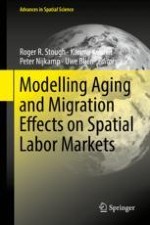2018 | OriginalPaper | Buchkapitel
8. More Pensioners, Less Income Inequality? The Impact of Changing Age Composition on Inequality in Big Cities and Elsewhere
verfasst von : Omoniyi B. Alimi, David C. Maré, Jacques Poot
Erschienen in: Modelling Aging and Migration Effects on Spatial Labor Markets
Aktivieren Sie unsere intelligente Suche, um passende Fachinhalte oder Patente zu finden.
Wählen Sie Textabschnitte aus um mit Künstlicher Intelligenz passenden Patente zu finden. powered by
Markieren Sie Textabschnitte, um KI-gestützt weitere passende Inhalte zu finden. powered by
